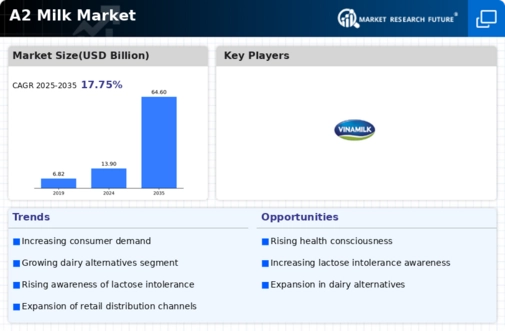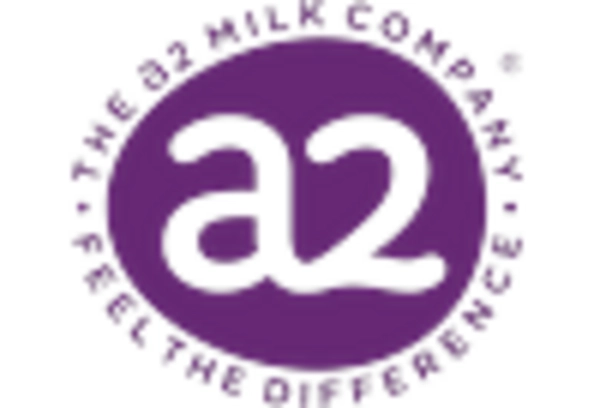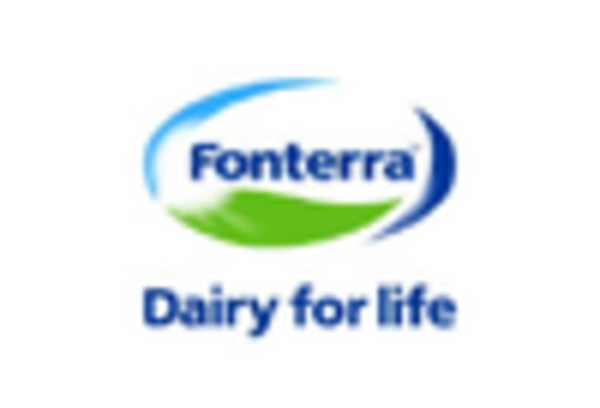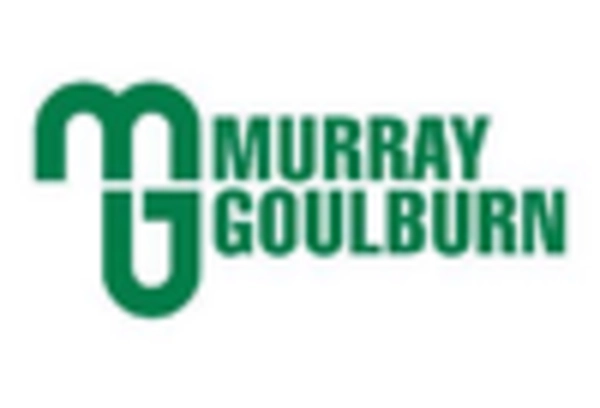Innovative Marketing Strategies
The A2 Milk Market is witnessing a transformation driven by innovative marketing strategies employed by A2 milk brands. These companies are leveraging social media, influencer partnerships, and targeted advertising to reach health-conscious consumers. By effectively communicating the unique benefits of A2 milk, such as its digestibility and nutritional advantages, brands are able to differentiate themselves in a competitive market. Additionally, educational campaigns that inform consumers about the differences between A1 and A2 proteins are gaining traction. This approach not only raises awareness but also fosters brand loyalty among consumers who prioritize health and wellness. As these marketing strategies evolve, they are likely to play a pivotal role in shaping consumer perceptions and driving growth within the A2 Milk Market.
Nutritional Benefits of A2 Milk
The A2 Milk Market is significantly influenced by the perceived nutritional advantages associated with A2 milk. Many consumers believe that A2 milk is easier to digest and may reduce gastrointestinal discomfort compared to conventional milk, which contains both A1 and A2 beta-casein proteins. Studies suggest that A2 milk may contribute to better health outcomes, including improved gut health and reduced inflammation. This perception is driving health-conscious consumers to opt for A2 milk over traditional dairy products. As awareness of these potential benefits spreads, the A2 Milk Market is likely to witness an increase in consumer adoption, further solidifying its position in the dairy sector. Additionally, the marketing strategies employed by A2 milk brands often emphasize these health benefits, appealing to a demographic that prioritizes wellness.
Expansion of Distribution Channels
The A2 Milk Market is benefiting from the expansion of distribution channels, which is crucial for reaching a broader consumer base. Retailers are increasingly recognizing the demand for A2 milk and are incorporating it into their product offerings. This includes not only traditional grocery stores but also health food stores, specialty shops, and online platforms. The rise of e-commerce has particularly transformed the way consumers access A2 milk, allowing for greater convenience and availability. As more consumers become aware of A2 milk and its benefits, the expansion of these distribution channels is likely to enhance market penetration. Furthermore, partnerships between A2 milk producers and retailers can lead to promotional campaigns that increase visibility and drive sales, thereby contributing to the overall growth of the A2 Milk Market.
Rising Demand for Lactose-Free Products
The A2 Milk Market is experiencing a notable increase in demand for lactose-free dairy alternatives. This trend is primarily driven by a growing awareness of lactose intolerance among consumers, which affects a significant portion of the population. Research indicates that approximately 65% of the world's adult population has some degree of lactose malabsorption. As a result, many consumers are seeking dairy products that are easier to digest, leading to a surge in the popularity of A2 milk, which is naturally lactose-free. This shift in consumer preference is prompting dairy producers to expand their offerings, thereby enhancing the A2 Milk Market's growth potential. Furthermore, the increasing availability of A2 milk in retail outlets and online platforms is likely to further stimulate market expansion.
Consumer Preference for Natural Products
The A2 Milk Market is increasingly shaped by consumer preferences for natural and minimally processed products. As consumers become more discerning about the ingredients in their food, there is a growing inclination towards products that are perceived as pure and free from additives. A2 milk, which is marketed as a natural alternative to conventional milk, aligns well with this trend. The clean label movement, which emphasizes transparency in food labeling, is also influencing purchasing decisions. Consumers are more likely to choose A2 milk when they perceive it as a healthier option that does not compromise on quality. This shift in consumer behavior is prompting dairy companies to invest in marketing strategies that highlight the natural attributes of A2 milk, thereby enhancing its appeal within the A2 Milk Market.


















Leave a Comment